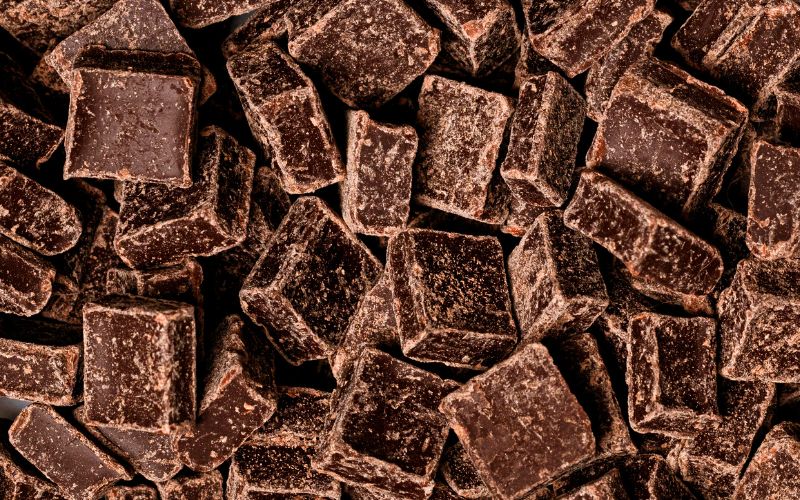Nature's Milk Chocolate
Despite what you may assume, chocolate has no natural sugar inside. As a result, the rich, bold, and medicinal taste of pure chocolate is off-putting to some. But nature has a fragile secret; a sensitive, hard to grow cacao bean, seemingly tailor made for the human tongue. The Criollo bean.

Coated in a thick and rich fat, accompanied with a smooth yet fruity complex taste, and used throughout the Mayan empire not only as a consumable delicacy but also a currency, this cacao bean's popularity is no surprise. Mesmerized by Criollo's rich cream color and the smoothness of the unripe beans, Spanish conquistadors dubbed it “Porcelana” for its natural resemblance to Porcelain.
The Forastero bean: Makes up 80% of the world's cacao production. This is due to its extreme durability and resistance to disease and pests. With an earthier and more acidic taste, many consider Forastero the least desirable cacao bean. Most of the world's Forastero beans are grown in Africa, where they have only been growing for around 150 years. This greatly affects the taste, as the soil lacks over a thousand years of cultivation. This significantly reduces the complexities of flavor offered by the beans that provide most of the world's chocolate.
The Trinitario Bean: Makes up anywhere from 10-13 percent of the world's cacao production. Trinitario trees are better at warding off disease and pests than Criollo trees, making it the second most grown cacao type. Trinitario beans are characterized by its deep purple center, and are grown almost exclusively in the southern tip of Mexico, Central America, and South America.
The Nacional Bean- Only having been recently rediscovered in 2011 in the jungles of Peru, the Nacional bean is now the rarest known strain of cacao bean. So rare, I hesitated to even give it a mention. It offers a less bitter taste than the Forastero or Trinitario bean, but lacks the smoothness and overall fruitiness of the Criollo bean.
Criollo? Why So Special?
Accustomed to the modern age of sweetened goods, it's hard to appreciate the depth of flavor and bitterness completely unaltered chocolate brings. And as nature would have it, the Criollo bean tends to lack the bitterness and acidity of other strains.
At ChocoVivo, our Porcelana Heirloom Bars, which are made from Criollo trees on our Cacao farm in Tabasco, Mexico, are our best kept secret. While there is certainly much to appreciate about our other bars made from Trinitario beans, the taste of our pure bars can still strike one as ‘too much’. But the light, smooth, and naturally creamy taste of the Criollo bean is virtually tailor made for the human tongue. Due to its rarity and susceptibility to disease, only about 1% of the worlds chocolate bars are made with Criollo beans.

Closest to the pure and original Criollo bean used in the times of the Mayan and Aztec empires, is the Porcelana variety, which is what we use to make our Heirloom Criollo bars and powders.
Appearance in Drink and Bar Form
Drinks and Bars made from Criollo beans will appear much lighter in color. Closer to cream than brown, it will appear that even a high percentage cacao bar or drink has been made from milk chocolate.
Nature’s Milk Chocolate
Higher in fat content and lower in tannins, theobromine, and polyphenols, the Criollo bean is much less bitter than its mass produced counterpart, the Forastero bean, and still half as bitter as its half-brother, the Trinitario bean. Maintaining a strong chocolate taste and pairing it with exceptional fruity and nutty notes, the Criollo bean deserves the moniker of "Nature's Milk Chocolate".
On The Edge of Ruin
In 1727, an endemic ravaged Trinidad, sweeping through its Criollo population. In a drastic effort to save cacao production they brought in Forastero trees to curb the endemic, leading to the creation of the Trinitario bean, a crossbreed of the Forastero and Criollo bean. As a result, the Trinitario bean retains the strong chocolate flavor of the Forastero bean, while being generally less acidic and bitter.
But Is It Still Healthy?
While Criollo is higher in fat content, many of cacao’s essential nutrients that have earned it the infamous “superfood” designation are found in its natural fats. The higher fat content doesn’t decrease the health currency of the cacao, and the naturally sweeter taste due to its smaller amount of polyphenols and tannins doesn’t mean it's worse for your health.
So the next time you are set on having a pure bar of chocolate, try our Heirloom bars. With a taste that immediately makes one think "delicacy" you will not regret trying what the Mayans and Aztecs deemed "The Food of the Gods''.



